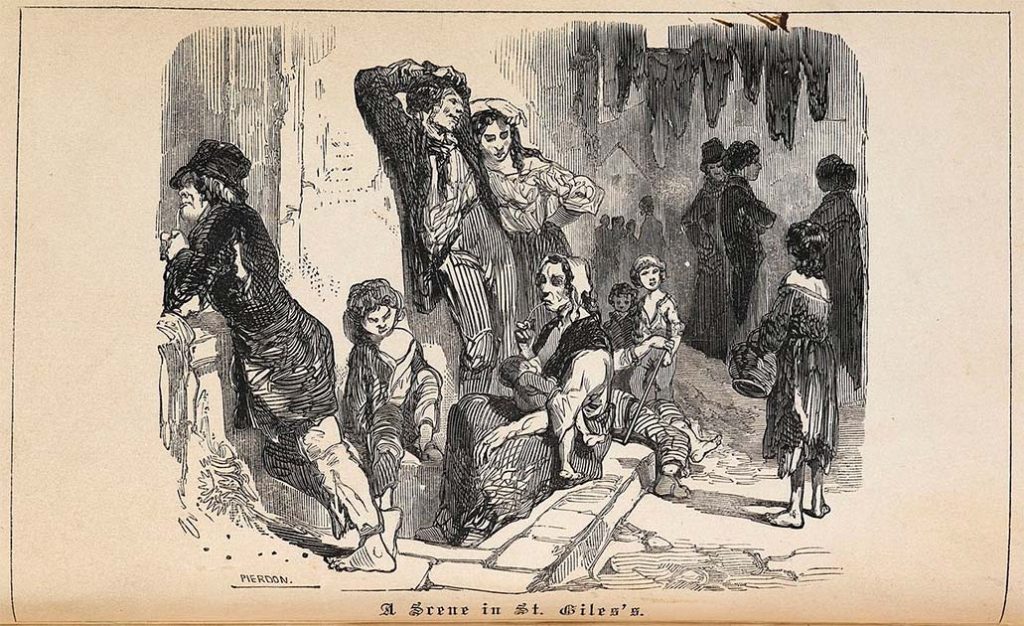It’s a well-known stereotype that the English like a good pint of beer, second only perhaps to a love of a cup of tea. This love of beer is mostly harmless, but it led to perhaps one of history’s most peculiar events, the London Beer Flood of 1814.
This bizarre incident unleashed a torrent of beer upon the unsuspecting streets of London, leaving in its wake a trail of sudsy chaos and peculiar consequences. But what caused this unique disaster? And what lasting impact did it have on London’s brewing culture and the collective memory of a city drenched in ale?
Couldn’t Hold the Drink
The strange tale of the London Beer Flood begins on 17 October 1814. It was business as usual at the Meux & Co’s Horse Shoe Brewery on Tottenham Court Road with each of its massive wooden vats, each holding thousands of barrels worth of beer standing tall, fully stocked.
Then disaster struck. One of these immense vats, measuring 22 ft tall (6.7m) and full to the brim of fermenting porter suddenly burst, releasing between 128,000 and 323,000 imperial gallons (580,000–1,470,000 liters) of fermenting beer. This caused an unfortunate chain reaction, dislodging the valve on another vat and destroying several other massive barrels completely.

The precise cause remains shrouded in historical fog, but it is believed that a combination of factors contributed. Most believe that weakness in the vat’s structure, perhaps due to negligence, exacerbated by the immense pressure of the fermenting beer within, led to its ultimate rupture.
The rupture unleashed a biblical deluge of beer upon the brewery and the surrounding area. The force was akin to a miniature tsunami, as a tidal wave of beer surged through the brewery’s walls, bursting forth with a thunderous roar. The area behind the brewery was a slum known as St Giles rookery and buildings in the flood’s path were obliterated, the relentless tide of alcohol sweeping away unfortunate bystanders.
- The Dublin Whiskey Fire: Drowning Your Sorrows?
- Wartime Sabotage in a Neutral Country? The Black Tom Explosion
The date, October 17, 1814, would forever be etched into history as the day London was inundated with beer. It was a disaster of proportions no one could have foreseen, and it left a lasting mark on the city.
The London Beer Flood wreaked havoc that went beyond just soaked streets and beer-soaked clothes. As the beer surged through the brewery’s walls and into the neighboring St. Giles rookery, the damage was both extensive and tragic.
Houses were flattened, and structures were reduced to rubble in the blink of an eye. The sheer force of the beer swept people off their feet, causing injuries and, sadly, at least 8 fatalities. Despite its humorous moniker, in reality, it was an unexpected and surreal disaster that left a lasting mark on those who witnessed it.
In the aftermath, the cleanup efforts were monumental. Workers labored tirelessly to clear away the debris and salvage whatever they could, and many residents of the St Giles rookery were left homeless. The stench of beer hung in the air for weeks, a constant reminder of the strange occurrence.
Despite the chaos and destruction, the Meux & Company Brewery fared better and was fortunate to have been insured against such mishaps, and they were able to claim compensation for their losses. The brewery was eventually rebuilt, and measures were taken to ensure that such a catastrophe would not recur.
Never Again
The London Beer Flood left a lasting impact on both the brewing industry and the collective memory of the city. While it might not have reshaped London’s landscape entirely, it did trigger several noteworthy changes.
- Boston’s Sticky History: The Great Molasses Disaster of 1919
- The Ocean Ranger, the Mekhanik Tarasov and the Terrifying Power of Nature
For starters, the flood prompted increased scrutiny of brewery safety standards. While the cause of the flood was never officially confirmed, most suspected the first vat had burst under the pressures of the fermenting liquid inside.
Regulations were introduced to prevent similar mishaps, including stricter guidelines for the construction and maintenance of fermentation tanks and vats. Brewers were now forced to take the dangers of exploding beer vats more seriously now that the possibility was no longer purely hypothetical.

Secondly, the event became a popular subject in the art and literature of the time. It was immortalized in satirical prints and featured in humorous stories and songs. This unique incident became a symbol of London’s eccentricities and its ability to find humor even in disasters.
Ultimately though this moment of surreal chaos is a reminder that history is not solely composed of grand events but also the unexpected, the bizarre, and the humorous. While it didn’t cause as much damage as other major events, like the Great Fire of London, it did leave an indelible mark on the city’s brewing industry and folklore.
This peculiar disaster has become a strange point of pride. It serves as a reminder that even amidst disasters, resilience and humor can prevail.
But amidst all the laughter, the London Beer Flood has an important lesson to teach. The London Beer Flood killed at least eight and left many more homeless, something that could have been avoided with proper regulation and enforcement. Two things that are needed just as much today as they were two hundred years ago.
Top Image: The deluge from the Great London Beer Flood led to several deaths in the neighboring slum of St Giles’s Rookery. Source: Aksana / Adobe Stock.